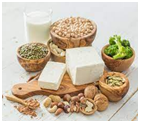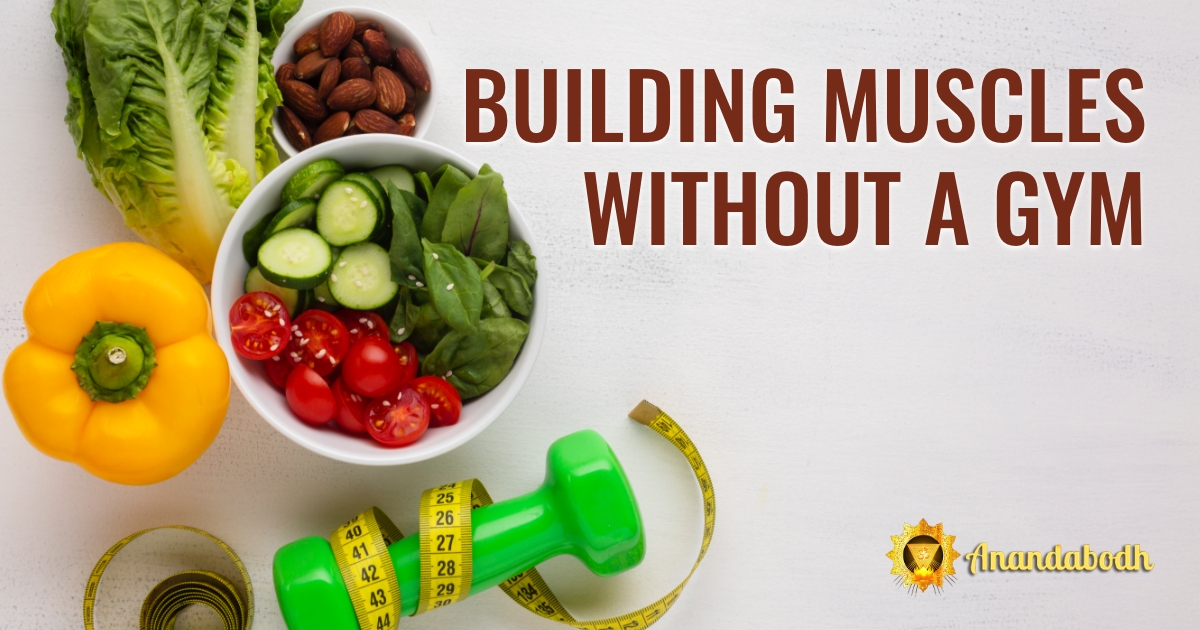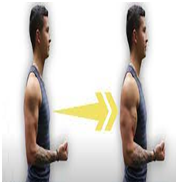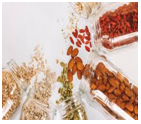Everyone knows that exercise is one of the best things you can do for your health. But most people ignore one crucial component of it: resistance training. According to federal researchers, only 6 percent of adults do the recommended minimum amount of at least two muscle-strengthening workouts each week. Neglecting resistance training – any type of workout that builds strength and muscle – is a big mistake. It increases your metabolism, lowers your body fat and protects you from some of the leading causes of early death and disability. You don’t have to lift like a bodybuilder (or look like one) to benefit from resistance training. And it’s never too late to get started. Here is everything you need to know about resistance training, along with some simple, expert-approved workouts you can do at the gym or at home with minimal equipment.
Fighting Back Against Muscle Loss
Our muscles are invaluable. They’re the reason we can walk, run, climb and carry things around. But as we get older, they begin to melt away. Muscle starts to deteriorate when we reach our 30s. After age 40, we lose on average 8 percent of our muscle mass every decade, and this phenomenon continues to accelerate at an even faster rate after age 60. Studies show that this loss of muscle hastens the onset of diseases, limits mobility, and is linked to premature death.
Another detrimental consequence is the impact that this has on your bones. The same factors that help you maintain muscle are the same factors that keep your bones strong and dense. So as you lose muscle with age – a process called sarcopenia – your bones become brittle, a process known as osteopenia.
“The bones, muscles, ligaments and tendons in your musculoskeletal system all work together, and they either become stronger together or weaker together.” Because your muscles and bones are inextricably linked, when you lose muscle you’re at greater risk of the following:
- Osteoporosis
- Arthritis
- Chronic back pain
- Frailty
- Fractures
Most people accept the loss of muscle, bone and all the downsides that follow as a natural part of aging. But studies show you can slow and delay these processes by years or even decades with a muscle strengthening program that works your entire body. Scientists at the Buck Institute for Research on Aging found that doing just two resistance-training sessions each week can reverse the age-related cellular damage that contributes to sarcopenia and functional impairment.
When it comes to building muscle, there are numerous theories, methods, and preferences. Whether the goal is improved health, aesthetics, performance, or a combination of all three, there is no shortage of advice to help you get there. So much so that it can sometimes become overly complicated and you forget about the basic facts. But, it’s simpler than it seems.
Here are some of most basic facts about muscle building from how to eat, train, live, and more:
1. It takes protein
Protein is vital to have with every meal because it builds and maintains muscles. Aim for one gram of protein per pound of body weight a day — less active people need less — and that should be spread out over five or six small meals. Don’t go overboard, though. Excess protein, especially from animal sources, has been linked to kidney stones.
2. It takes carbs
Protein will only be used to build muscle if you consume enough carbohydrate calories to provide your body with energy. Otherwise, your body will tap into the protein for that fuel. Carbs provide energy for muscle function and act as the fuel for the brain. Go with minimally processed carbs such as veggies, steel-cut oats, and quinoa.
3. It requires frequent eating
Eating five or six small meals a day keeps your body’s metabolism firing. If you don’t eat often, the most readily available substance for the body to consume is muscle—not fat. The body is resistant to fat loss and will turn to attacking lean muscle first. Keep plenty of fuel in the tank so muscle is not consumed.
4. Sleep is key
It’s difficult to build muscle without adequate sleep—seven hours a night, preferably eight. Sleep is when most of your hormones, such as growth hormone and testosterone, are released, allowing your body to recover and grow. Without adequate sleep, you’re sabotaging your efforts to build muscle.
5. The foundation is important
Beach muscles and Olympic lifts draw more attention. But the many little stabilizer muscles around your shoulders, hips, and midsection — collectively the core — provide a strong foundation. Challenging the stability and mobility of these key muscles with medicine balls, physio balls, mini-bands, and rotational movements (lifting, chopping) pays huge dividends.
6. Routine is the enemy
Training at a consistent time of day is a great thing. But having a routine workout is not since the body quickly adapts. Constantly challenge yourself by adding different movements. When you do turn to a familiar exercise, aim for a personal best.
7. it’s about the rear view
Our sedentary, technology-based culture has produced a population of hunched over people with tight hips and bad backs from too much sitting. Building muscle effectively is difficult without a properly functioning set of glutes. By learning to move through the hips and activate and fire your glutes, you’ll be well on your way to moving properly and building muscle efficiently and with less risk of injury.
8. Women won’t get too bulky
Contrary to popular belief, women won’t get overly muscular unless they take steroids or other harmful supplements. Women lack the testosterone needed to put on that type of muscle.
9. Timing is important
At the end of your workout, your body is screaming for nutrients. The sooner you refuel the tank, the quicker your body will recover and your muscles will grow. One simple strategy is to place in your gym bag a post-workout recovery mix and a shaker bottle that you can mix immediately following the workout.
10. So is getting wet
Water sports such as swimming, surfing, and stand-up paddle boarding are great ways to build muscle. But however you train, drinking sufficient water is essential to building muscle. Drinking enough water before, during, and after exercise can increase performance up to 25 percent. Drink ½ to one ounce of water per pound of body weight per day to maintain hydration.
11. Its not just about lifting
You can build muscle from carrying logs, flipping tires, hauling jugs of water, paddling, navigating monkey bars and countless other ways. The best muscle-building exercises are those that mimic everyday movements. They’re also more fun and prepare you for obstacle races, if you’re so inclined.
12. The more muscle involved, the better
Why spend your time on an isolated exercise like a bicep curl or leg extension when you can get much more benefit from movements that pull in more of the body? Think in terms of rotational, chopping, and swinging movements that provide much more range of motion.
13. It takes intensity
Smart phones produce dumb workouts. Don’t be the person in the gym playing with the phone for two minutes between sets. You’ll lose the focus and intensity required to build muscle. Better yet, don’t rest between sets. Superset with a pushing exercise, like a set of pushups followed immediately with a pulling exercise like a dumbbell row. You’ll produce better performance since the non-working muscles recover faster while their opposing muscles work.
14. It takes (active) rest
The body recovers and muscles grow on off days. Rest is a good strategy but active rest promotes recovery. Rolling on a foam roller provides deep compression to roll out muscle spasms that develop over time. This allows the muscles to relax and loosen, gets the blood flowing, and helps the body recover more quickly.
15. It’s never too late
We tend to lose muscle mass as we age, starting in our thirties and especially as we hit our fifties. That doesn’t mean we can’t slow down the process and retain what we have. Strength training is an effective way to retain mobility and independence into the latter years.
Muscle-building foods
The following are foods containing protein to help someone build muscle. Some also contain carbohydrates and fiber, while many others contain beneficial micronutrients.
1. Eggs
A boiled or poached egg contains 6.28 g of protein. Eggs contain the amino acid leucine, which research indicates is essential for muscle synthesis. Eggs are also a suitable source of B vitamins that people need to produce energy.
2. Chicken
A medium chicken breast without skin weighing 120 g contains 35.5 g Source of protein. Chicken without the skin is a low fat protein source that someone can easily add to different meals and recipes.
3. Turkey
A cup of chopped turkey contains 37.23 g of protein, while a turkey drumstick contains nearly 27 g of protein. Like chicken, turkey is a low fat protein source that is adaptable to different meals and recipes.
4. Greek yogurt
Five ounces (oz) of Greek yogurt contains 12–18 g of protein. A person could add some carbohydrate-rich banana to their Greek yogurt for a healthy snack after training.

5. Cottage cheese
Part-skimmed cottage cheese contains 14 g of protein per half-cup. Cottage cheese is also rich in calcium for healthy bones.
6. Salmon
A 227 g salmon steak contains 58.5 g of protein. Salmon also contains omega-3 fatty acids, which including preventing muscle loss in older adults.
7. Tuna
Tuna fish is a suitable source of omega-3 fatty acids besides their benefits for general health and inflammation. Omega-3 fatty acids may also improve muscle size and strength. Tuna contains 7 g of protein per ounce.
8. Whey protein powder
Whey protein isolate powder contains 50 g of protein per 3 scoops. If someone tolerates whey protein powder, they can boost their protein intake by making shakes and drinks.
9. Soy protein powder
Soy protein powder contains around 25 g of protein per scoop. People who eat a plant-based diet may find soy protein powder a valuable addition to boost their protein intake. They can add it to a smoothie along with some fruit and plant-based milk.
10. Walnuts
A cup of chopped shelled walnut halves contains 15.2 g of protein and 9 g of omega-3 fatty acids, which may benefit muscle building. Walnuts are also a suitable source of dietary vitamin E, which indicates may protect the body against physical stress during exercise.
11. Lentils
Lentils contain 9 g of protein per half-cup and a range of amino acids. They are a source of fiber, carbohydrates, vitamins, and minerals. Lentils provide a protein source for people following plant-based diets, and someone can achieve a balanced amino acid profile by combining lentils with a whole grain such as brown rice.
12. Almonds
A cup of dry roasted almonds without salt contains nearly 29 g of protein. Nuts also provide fiber to help keep someone fuller for longer and B vitamins for energy during training.
13. Cheese
A cup of diced cheddar cheese contains around 30 g of protein, while a cup of Mozzarella cheese has over 31 g of protein. However, many kinds of cheese are a source of saturated fats. Government guidelines advise people to limit saturated fats to no more than 10%Trusted Source of their daily calories.
People need a variety of protein sources and amino acids to build muscle during training. They can choose from many common animal- and plant-based foods and combine these with adequate amounts of carbohydrates. Protein foods, such as oily fish, may have additional benefits for health and exercise. Individuals should ensure they consume essential vitamins and minerals in their diet for energy, performance, and recovery. They should also make sure they are adequately hydrated.












